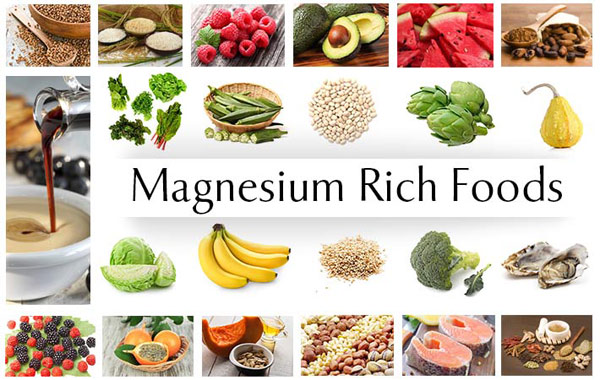Magnesium Facts:
Magnesium is the fourth most abundant mineral in the body and is essential to good health. Firstly, approximately 50% of total body magnesium is found in bone. Secondly, the other half is found predominantly inside cells of body tissues and organs. In addition, only 1% of magnesium is found in blood. Above all, our body finds it very hard to keep blood levels of magnesium constant.
Most importantly, magnesium is needed for more than 300 biochemical reactions in the body!
Magnesium aids in:
As well, it helps maintain normal muscle and nerve function, keeps heart rhythm steady, supports a healthy immune system, and keeps bones strong. Firstly, magnesium also helps regulate blood sugar levels. Secondly, it promotes normal blood pressure, and thirdly it is known to be involved in energy metabolism and in addition protein synthesis.
What diseases magnesium supplementation can prevent:
Above all, there is an increased interest in the role of magnesium in preventing and managing disorders such as hypertension, cardiovascular disease, and diabetes.
Most importantly, dietary magnesium is absorbed in the small intestines. As well, our liver can impair how much magnesium we do take in. Moreover magnesium is excreted through the kidneys.
Shop our website for an excellent magnesium supplement:
https://www.back2health4you.com/shop/
In addition, here are some magnesium supplements:
Try the Magnesium Glycinate bowel tolerance test:
| Morning | Noon | Afternoon | Bedtime | Total | |
| Day 1 | 2 | 2 | |||
| Day 2 | 1 | 2 | 3 | ||
| Day 3 | 1 | 1 | 2 | 4 | |
| Day 4 | 1 | 1 | 1 | 2 | 5 |
| Day 5 | 1 | 1 | 1 | 3 | 6 |
| Day 6 | 2 | 1 | 1 | 3 | 7 |
| Day 7 | 2 | 2 | 1 | 3 | 8 |
| Day 8 | 2 | 2 | 2 | 3 | 9 |
| And so on |
- Firstly, Once you experience loose stools/diarrhea, add up the total daily dose and reduce the number of tablets by approximately 25%. Secondly, If your total daily dose was 10 tablets then 25% of this is 2.5 tablets. Thirdly, You should round up to 3 and take 7 tablets throughout the day.
- When you experience loose stools again, add up the daily dose, reduce by 25% again.
- In conclusion, When you get down to the number of tablets you require of Magnesium Glycinate tablets you will take this amount and ensure you take several at bedtime.
What foods provide magnesium?
Foods High in Magnesium:
In this paragraph we will discuss what foods are high in magnesium. Firstly, green vegetables such as spinach are good sources of magnesium because the center of the chlorophyll molecule (which gives green vegetables their color) contains magnesium. Secondly, some legumes (beans and peas), nuts and seeds, and whole, unrefined grains are also good sources of magnesium.
Foods Low in Magnesium:
Thirdly, refined grains are generally low in magnesium. Most importantly, when white flour is refined and processed the magnesium-rich germ and bran are removed. As well, with bread made from whole grain wheat flour this provides more magnesium than bread made from white refined flour.
Tap Water and Magnesium:
As well, tap water can be a source of magnesium. Above all, the amount varies according to the water supply. In conclusion, water that naturally contains more minerals is described as “hard”. “Hard” water contains more magnesium than “soft” water.
In conclusion, eating a wide variety of legumes, nuts, whole grains, and vegetables will help you meet your daily dietary need for magnesium and Hard tap water.
Selected food sources of magnesium are listed in Table 1.
| FOOD | Milligrams (mg) | %DV* |
| Halibut, cooked, 3 ounces | 90 | 20 |
| Almonds, dry roasted, 1 ounce | 80 | 20 |
| Cashews, dry roasted, 1 ounce | 75 | 20 |
| Soybeans, mature, cooked, ½ cup | 75 | 20 |
| Spinach, frozen, cooked, ½ cup | 75 | 20 |
| Nuts, mixed, dry roasted, 1 ounce | 65 | 15 |
| Cereal, shredded wheat, 2 rectangular biscuits | 55 | 15 |
| Oatmeal, instant, fortified, prepared w/ water, 1 cup | 55 | 15 |
| Potato, baked w/ skin, 1 medium | 50 | 15 |
| Peanuts, dry roasted, 1 ounce | 50 | 15 |
| Peanut butter, smooth, 2 Tablespoons | 50 | 15 |
| Wheat Bran, crude, 2 Tablespoons | 45 | 10 |
| Blackeyed Peas, cooked, ½ cup | 45 | 10 |
| Yogurt, plain, skim milk, 8 fluid ounces | 45 | 10 |
| Bran Flakes, ½ cup | 40 | 10 |
| Vegetarian Baked Beans, ½ cup | 40 | 10 |
| Rice, brown, long-grained, cooked, ½ cup | 40 | 10 |
| Lentils, mature seeds, cooked, ½ cup | 35 | 8 |
| Avocado, California, ½ cup pureed | 35 | 8 |
| Kidney Beans, canned, ½ cup | 35 | 8 |
| Pinto Beans, cooked, ½ cup | 35 | 8 |
| Wheat Germ, crude, 2 Tablespoons | 35 | 8 |
| Chocolate milk, 1 cup | 33 | 8 |
| Banana, raw, 1 medium | 30 | 8 |
| Milk Chocolate candy bar, 1.5 ounce bar | 28 | 8 |
| Milk, reduced fat (2%) or fat free, 1 cup | 27 | 8 |
| Bread, whole wheat, commercially prepared, 1 slice | 25 | 6 |
| Raisins, seedless, ½ cup packed | 25 | 6 |
| Whole Milk, 1 cup | 24 | 6 |
| Chocolate Pudding, 4 ounce ready-to-eat portion | 24 | 6 |
*DV = Daily Value. DVs are reference numbers developed by the Food and Drug Administration (FDA) to help consumers determine if a food contains a lot or a little of a specific nutrient. The DV for magnesium is 400 milligrams (mg).
Most food labels do not list a food’s magnesium content. The percent DV (%DV) listed on the table above indicates the percentage of the DV provided in one serving. A food providing 5% of the DV or less per serving is a low source while a food that provides 10-19% of the DV is a good source. A food that provides 20% or more of the DV is high in that nutrient. It is important to remember that foods that provide lower percentages of the DV also contribute to a healthful diet.



